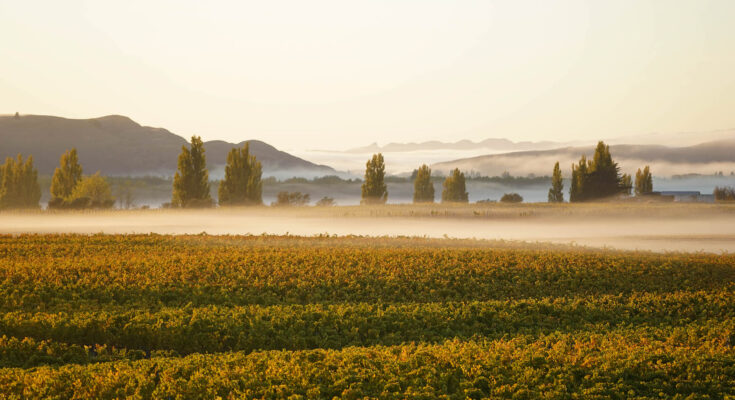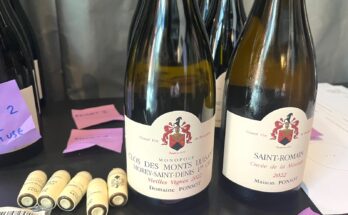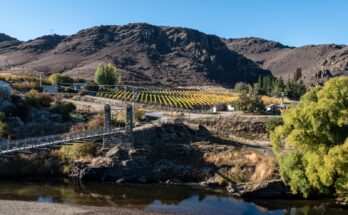Continuing our look behind the wine that’s in your glass… WineFolio talks to one of the growers of premium grapes in Hawke’s Bay – Ian and Linda Quinn, of Two Terraces Vineyard.
What’s the background to Two Terraces? We set up Two Terraces Vineyard in Hawke’s Bay as growers – we are focused on building medium-long term relationships with top winemakers who are looking for fruit to make wines at the premium end of the market.
I used to work in the technology space in networking and telecommunications, but after 25 years of that, was keen to switch to a second career. I’d been doing a Certificate in Wine at EIT by correspondence while living in Hong Kong, and realised viticulture was what I wanted to do.
We got some help from Nick Hoskins who was instrumental in getting us headed down the right path, and we’ve had more assistance from a wide variety of people since. The industry is such that you can call up pretty much anyone and ask a question or pick through their experience, and we’ve done that in spades!
Linda and I purchased the land back in 2015 – 24ha on the Mangatahi Terraces located on the southern side of the Ngaruroro river. At that time it was being grazed by sheep, but surrounded by well established vineyards. We were really looking for sufficient land to be able to set up as full time growers, but small enough to still be operated by ourselves.
The varieties we planted were based partly on what grows well in this subregion, partly by some of the early winemakers that we wanted to work with, and also by some personal preference on what we wanted to grow! We have a mix of large and small plantings depending on the variety – initially we planted Chardonnay, Chenin Blanc, Gamay Noir and Syrah in 2016. A couple of years later, we added more Chardonnay, a bit more Gamay and a sizeable planting of Albarino.
Easthope Family Winegrowers made a small amount of Chenin in 2018 – our first vintage. Like the rest of Hawke’s Bay, 2019 was a stellar vintage for us – some of those wines include Chenin from Easthope, Decibel Wines and Esk Valley, along with the first Easthope Gamay off this vineyard. Villa Maria picked fruit for a couple of their Hawke’s Bay Chardonnay’s which are due out soon. For 2020, we expanded the winemakers we’re working with to include Radburnd Celllars, Smith&Sheth, Organised Chaos and Amoise.
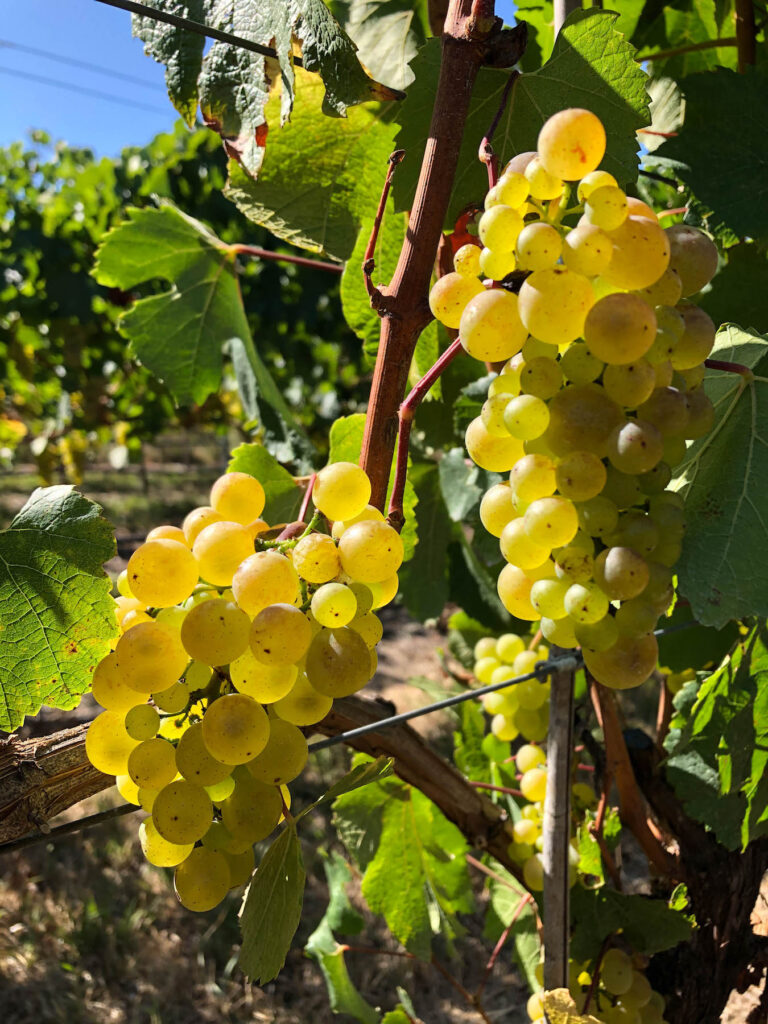
Have you been connected to the wine industry before; or do you just see your role as farming, with grapes as the product? We’re definitely focused on growing wines. Obviously the winemakers take the fruit through to the final wine, but we like to know as much as we can about the style they are targeting and what they like in their fruit. We typically follow the fruit through fermentation and in the cellar over winter – tasting with the winemakers, and the discussion that comes from that helps us refine what we’re doing in the vineyard and really build that end-to-end context.
I think it takes a vintage or two to get that experience together, but we’ve been really happy with the wines released so far (a couple of stellar vintages in 2019 and 2020 help!).
Is there anything you feel is special or unique about the vineyard site? The strengths of the Mangatahi Terraces subregion really come from the influence of the Ngaruroro River and the local climate. The upper terraces are 10-15,000 years old and were laid down after the last ice age. We have up to 40m of well drained alluvial gravels topped off with a shallow layer of silt loam laid down by the river and wind. Volcanic activity on the Central Plateau deposited material as well, so when we dug soil pits, we found small layers of ash and gravels along with that distinct red metal colour.
While the stony sheltered terraces get very warm over summer, being inland and slightly elevated we also have cooler nights. That wide diurnal range preserves acidity and allows us to pick each variety a little later.
Perched on the edge of the top terrace, we also have pretty spectacular views up the Ngaruroro valley and across to the Crownthorpe terraces on the other side – it doesn’t influence the wine we grow, but makes it a pretty pleasant place to live and work!
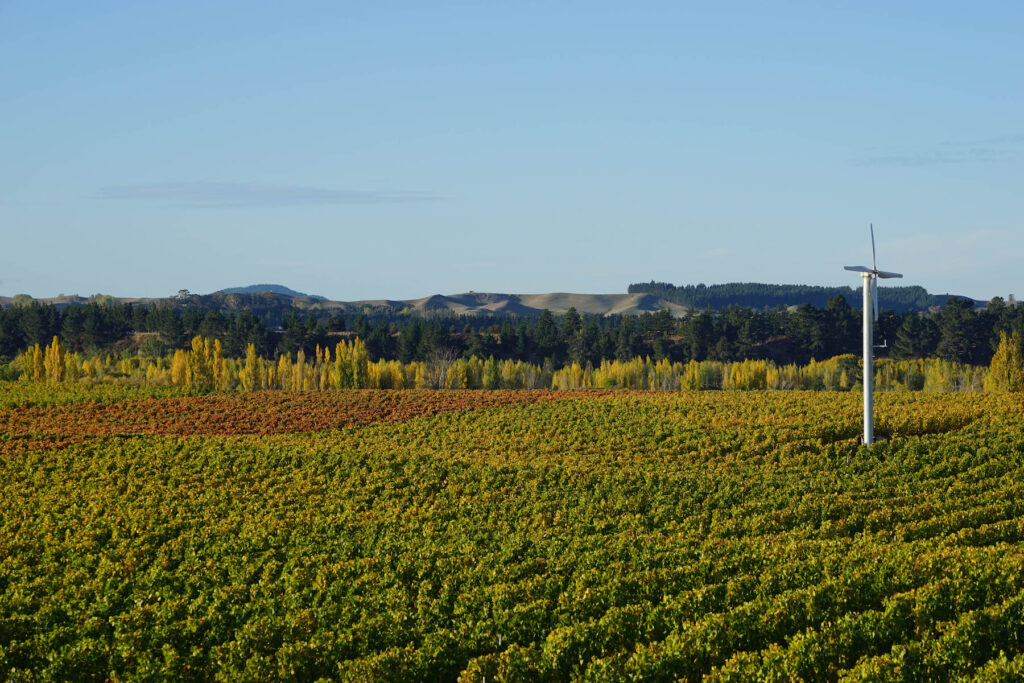
Do you have any thoughts about winemaking styles? Do you have preferences for what type of wines your grapes will be used to make? We’re really keen to see winemakers take their own distinctive stylistic path. Typically we have multiple winemakers taking fruit from the same blocks, so it’s definitely more interesting to see those wines travel different paths to the bottle.
We’ve done one horizontal tasting of the three 2019 Chenin (Easthope, Decibel and Esk Valley) with friends, which was a lot of fun. I think you can still see a common thread in terms of the fruit being of the same vineyard and vintage, but the wines people are producing are still very individual and when you follow what they are doing in the winery, you can really pick it in the final product. This will expand as we add more options in 2020 and the years following.
Is there a moment in the growing year where you just ‘get a feeling’ for what’s going on / going to happen? I think it constantly builds through the season. The time from flowering (late November / early December) onwards is a key time from a growing perspective – that’s when you start managing yield. In terms of the flavours and ripeness, it’s really the last few weeks when flavours develop and start to concentrate up. At the point, the winemakers are in walking the blocks every few days and it’s a great opportunity to track development together.
You do get an overall sense of the vintage as you go through the season from the weather that you’ve had, but you never know what cards mother nature might still play until the fruit is harvested. For a grower, you experience a massive relaxation post-harvest as you pass the fruit to the winemakers! It’s a fairly unique experience, putting all of the effort in during the growing season and living on the edge with the weather, before hopefully finishing with a great sense of satisfaction.
What trends have you noticed – or are predicting? In places, increasing consumer awareness of the provenance of what they are eating and drinking, around how it is grown and made. I think New Zealand’s Sustainable Winegrowing system has put the industry here in a good position overall, although there are opportunities to take it further with some of the increased focus on organic production, and the wider regenerative farming movement. It’s also good to see this reflected in the way winemakers are working, with many adopting related techniques ranging from wild ferments, minimal intervention, low sulphur, through to the natural wine movement at the extreme.
We’re into our second year of conversion to organics in our Chenin and Gamay blocks now, and will expand that further over time. A key focus for us has always been looking after the soil and the diverse ecosystem underground, as well as trying to support balance in the insect population and other creatures above ground with diverse swards and wildflowers (8km last year). Any increased interest from consumers in how we grow wine is a good thing.
Obviously Covid-19 has had a huge ongoing impact around the world during the first half of 2020. It’s difficult to know how that is going to change the way people live and that will obviously effect the wider contexts within which wine is consumed – I think we will probably have to watch and evolve with it.
What do think is next for New Zealand wines? (I personally think Sparkling wines and Chardonnay) Chardonnay is definitely a big strength for New Zealand, with our reputation growing in the background over the past decade. We’ve got so many great Chardonnay’s from different regions and producers, and ongoing recognition of that quality from likes of Jancis Robinson. Events like the Farr Vinter’s tastings of Kumeu River against benchmark wines have really helped build that awareness of how good our Chardonnay can be, along with wins such as the Vidal’s 2012 Legacy taking out the International Chardonnay Trophy at Decanter several years ago.
I think Albarino is getting a lot of focus as well. There’s a number of examples out there now – Coopers Creek, Villa Maria, Te Awa, Smith & Sheth, Neudorf, Nautilus, Forrest Estate, Babich to name but a few. It’s one of those refreshing, fruit driven white wines that New Zealand is known for, and a variety that is already known in key markets like the UK. With a lot of potential for both texture and powerful intensity, it’s a variety that’s had a lot of winemaker interest over the last few years.
I think we’ll continue to see New Zealand’s reputation for Syrah growing on the world stage, building out our presence and the reasons to engage with our winemakers. We have some iconic Syrah’s already, and Hawke’s Bay Syrah’s have quietly won the International Syrah Trophy at the IWC for the last four years in a row. I think the 2019 and 2020 vintages will give this another significant push. The relatively small volumes will keep it focused at the higher end of the market, but that’s a good thing!
Do you have specific plans to supply grapes for whatever that might be? We picked Chardonnay as one of our key varietals early on – the Mangatahi Terraces subregion has been producing some beautiful Chardonnay going back to the 1990’s and it was a favourite variety of ours. It really suits the elevation, with the cooler night preserving acidity and allowing the fruit to ripen slowly and really build out the flavour profile. Around 50% of our vineyard is planted out in Chardonnay, with five different selections now.
We also planted 5ha of Albarino in 2018. We’d originally planned to start cropping that for the 2021 vintage, but some opportunities presented themselves to take a small hand harvest in 2020. It’s early days, but we were all really excited with how those grapes were tasting on the vine – very intense fruit flavours ranging from lime through to tropical fruits with the trademark acidity of Albarino, and all balanced out with good overall ripeness. Looking forward to seeing the wine evolve in the winery over winter, and to seeing the response when it hits the market!
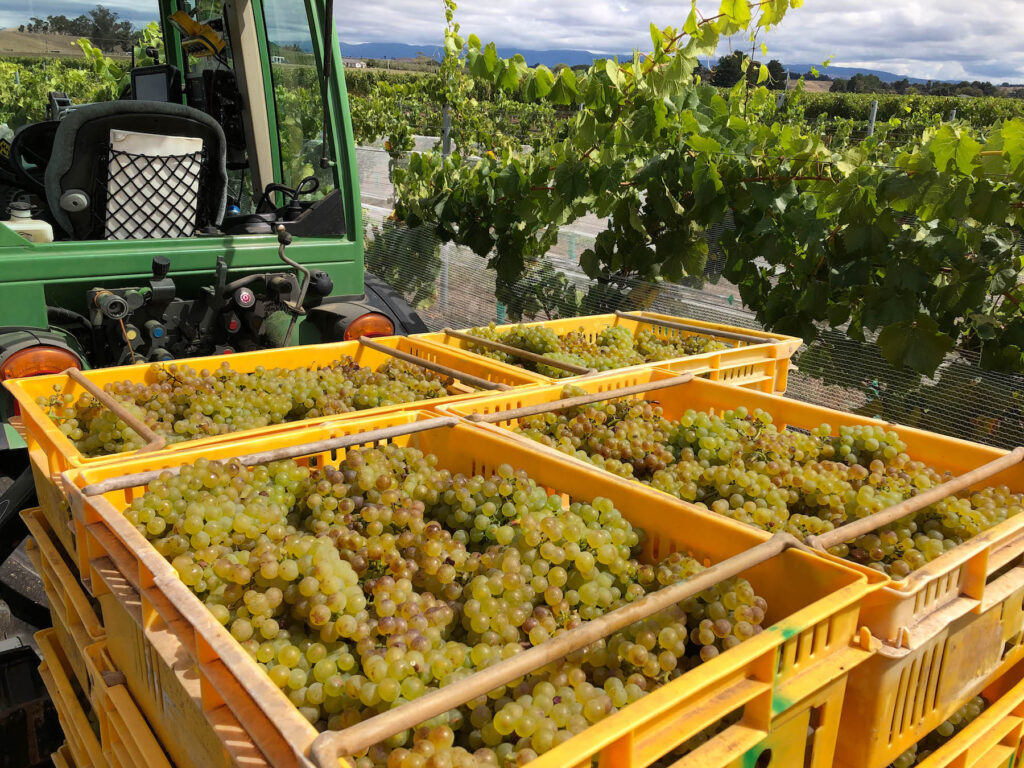
In what ways do you think the NZ wine industry might be affected by Climate Change? With a big focus on getting the right varietal’s planted in the right site, vintage variation, and the nuances of terrior being tightly interwoven with many of the stories that surround great wines, weather has always been integral to winegrowing.
I think we’ve already been seeing the impacts of climate change – it’s perhaps hard to attribute individual weather events to it, but the macro-level trends are there. NZ Winegrowers has just completed a significant piece of work modelling how different climate change scenario’s will play out in terms of frost, rainfall, heat accumulation, etc, so we can do have some solid data to base that on.
For us, the potential for more drought events is probably the biggest risk. Vineyards are very efficient in terms of water usage – the driest months of the year coincide with when we are being particularly careful with irrigation to ensure fruit ripens optimally, but we do still need water to keep them healthy. More extreme frost events and late season weather systems are other things we worry about! I think we can continue to evolve whether it’s changing the way we grow, the styles of wine we make, or gradually evolving where we grow each of the varieties, but there needs to be real urgency in addressing the drivers of climate change (big topic!).

